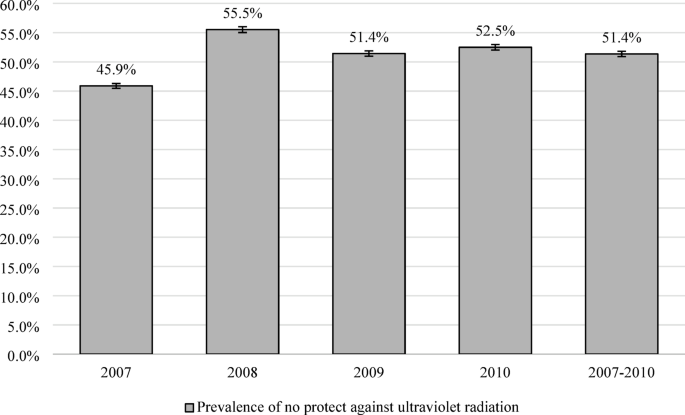Understanding Sun Protection Behaviors in Brazil: Insights from a Comprehensive Study
Introduction
As awareness around the importance of sun protection continues to grow, understanding the behaviors of individuals in different regions becomes crucial. A recent cross-sectional study conducted using data from the Surveillance System for Risk and Protective Factors for Chronic Diseases by Telephone Survey (Vigitel) unveiled key insights into sun protection behaviors among adults in Brazil. This study utilized rich datasets from the Brazilian Ministry of Health to reveal trends in protective practices against ultraviolet (UV) radiation.
Study Design and Data Source
This study harnessed data from Vigitel, an influential tool aimed at monitoring chronic non-communicable diseases (NCDs) in Brazil. Conducted annually, Vigitel’s mission is to track the risk and protective factors that can affect adult populations in the capitals of Brazilian states and the Federal District.
Key Features of Vigitel:
- Data Coverage: Every year, approximately 2,000 adults from each capital are surveyed.
- Objective: To measure risk and protective factors associated with NCDs.
- Testing Period: The analysis covered response data from 2007 to 2010, with a focus on sun protection measures.
Sampling and Methods
Vigitel employs a probabilistic sampling method, which is stratified geographically. The process unfolds in two stages:
- Selection of Telephone Lines: Residential fixed lines are chosen randomly.
- Respondent Selection: One adult member from each household completes the survey.
This structured approach ensures a 95% confidence level with a minimal error margin, leading to reliable estimates across Brazil’s diverse population.
Outcome Variable: Sun Protection Practices
The primary focus of this analysis was to determine the proportion of individuals who reported using protective measures against UV radiation. Survey participants responded to the question:
“When you are exposed to the sun for more than 30 minutes, do you usually use any protection against the sun?”
Types of Protection Measured:
- Sunscreen
- Hats or Umbrellas
- Appropriate Clothing
- Avoiding Sun Exposure
Participants were encouraged to select all applicable options, especially in the 2009 and 2010 editions.
Statistical Analysis
To ensure that the findings accurately represented Brazil’s adult demographic, all statistical analyses were conducted using the rake weighting method from Vigitel. This sophisticated technique adjusts data points based on key demographics identified in census data.
Analysis Overview:
- Statistical Software: Data analyses were performed with Stata.
- Variable Description: Categorical variables were summarized using prevalence estimates, confidence intervals, and coefficients of variation.
- Associative Studies: The study employed Poisson regression models to analyze relationships between sun protection behaviors and various explanatory variables.
Findings and Validations:
The results were robust, validated through relevant statistical checks such as the Variance Inflation Factor (VIF) to assess multicollinearity, ensuring the integrity of findings.
Conclusion
This comprehensive exploration of sun protection behaviors in Brazil highlights the critical need for increased awareness and education on preventative measures against UV exposure. The findings underscore the urgent requirement for public health campaigns that focus on the importance of sun safety.
For More Information:
To delve deeper into the Vigitel methodology and access the survey questionnaire, visit the Brazilian Ministry of Health’s Vigitel page.
By promoting awareness and providing accessible information, communities can empower individuals to adopt protective measures against UV radiation, ultimately contributing to better health outcomes in the long run.


